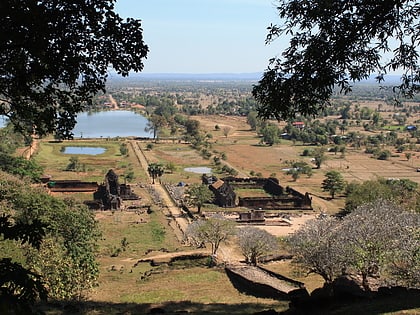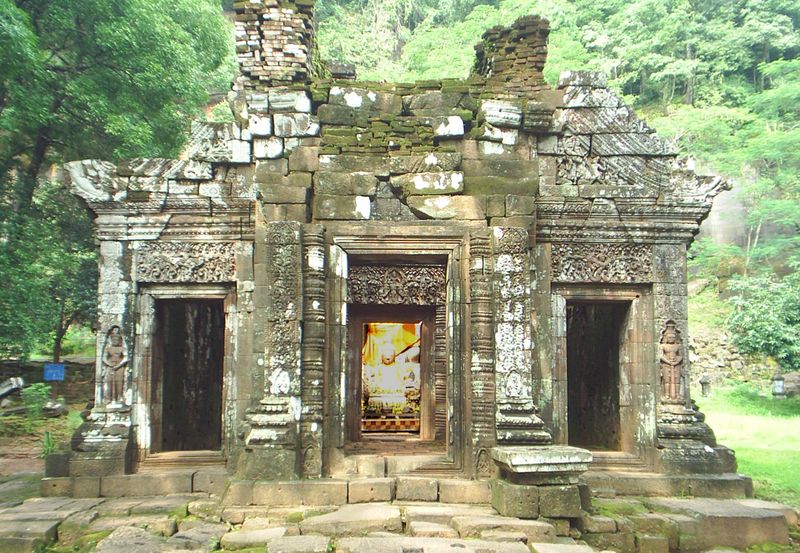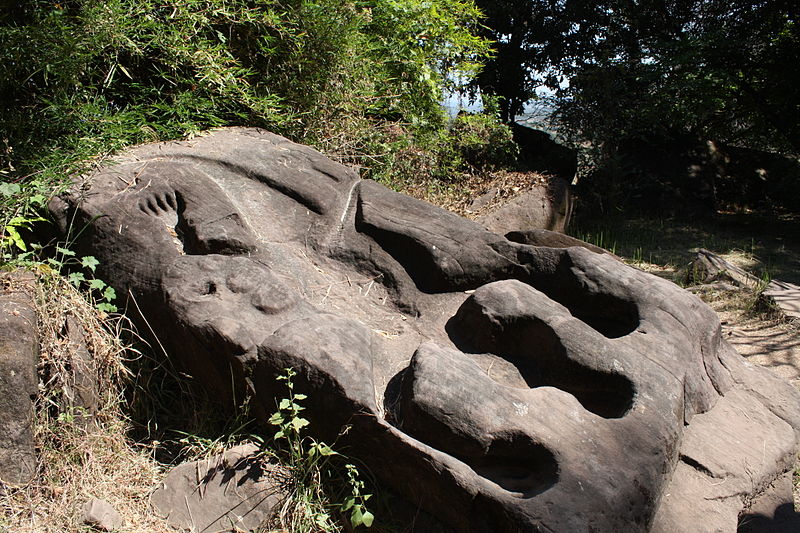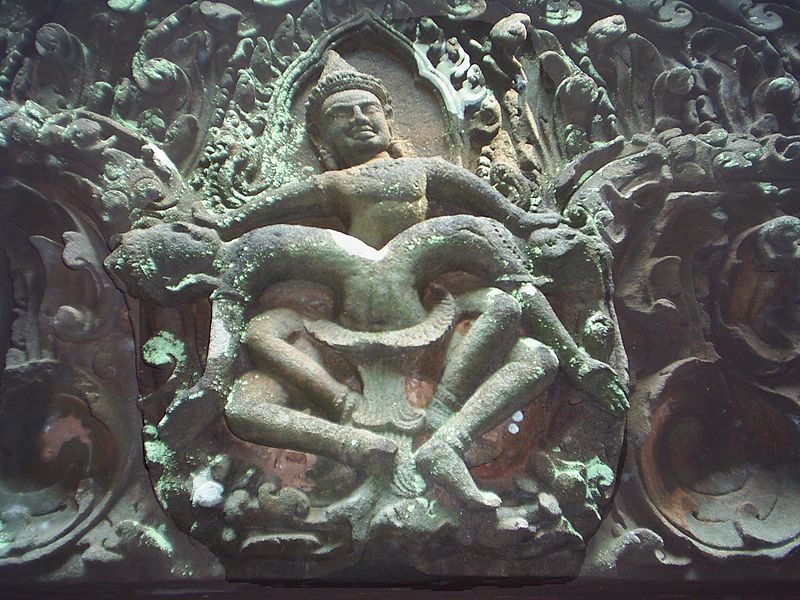Vat Phou
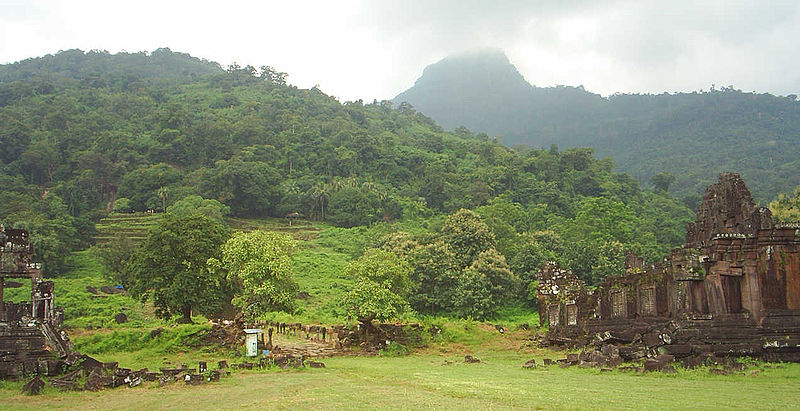
Facts and practical information
Nestled in the lush landscape of southern Laos lies the ancient temple complex of Vat Phou, a testament to the region's rich cultural and spiritual history. This Khmer Hindu temple, a relic of the Khmer Empire, which once dominated Southeast Asia, is a magnificent blend of natural and man-made wonder.
Vat Phou, or Wat Phu, meaning 'mountain temple,' is strategically situated at the base of Phu Kao mountain, the ancient structure dates back to the 5th century, although much of what remains today was constructed between the 11th and 13th centuries. The temple was originally dedicated to the Hindu god Shiva, but over the centuries, it has also become a place of Buddhist worship, reflecting the region's religious transformation.
The complex is recognized for its unique structure, which is laid out to express the Hindu vision of the relationship between nature and humanity. The temple's axis aligns with the mountain peak, and a processional walkway extends from the banks of the Mekong River up to the sanctuary. This walkway is flanked by boundary stones and intricate pavilions, leading pilgrims and visitors on a symbolic journey from the material world to the spiritual realm.
Vat Phou is not just a stunning historical site; it is also an archaeological treasure trove, offering insights into the architectural genius of the Khmer Empire. The site includes barays, or water reservoirs, which are evidence of advanced engineering skills, and the temple itself showcases exquisite carvings and inscriptions that have survived the ravages of time.
In 2001, UNESCO recognized the significance of Vat Phou by designating it as a World Heritage Site. This acknowledgment has helped to raise awareness of the temple and has spurred efforts to preserve this invaluable piece of Lao heritage for future generations.
Champasak
Vat Phou – popular in the area (distance from the attraction)
Nearby attractions include: Champasak.
